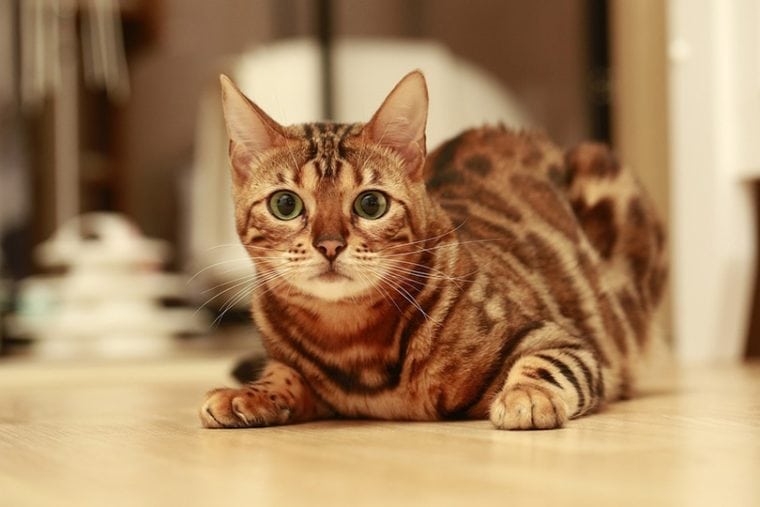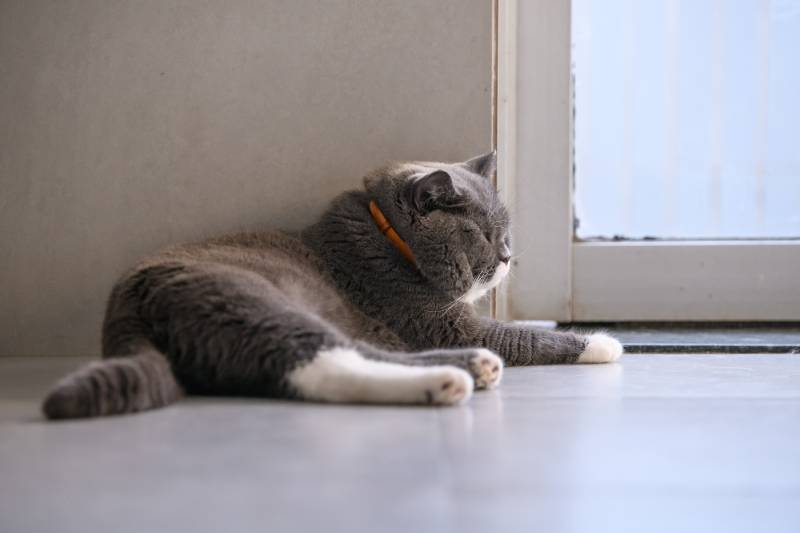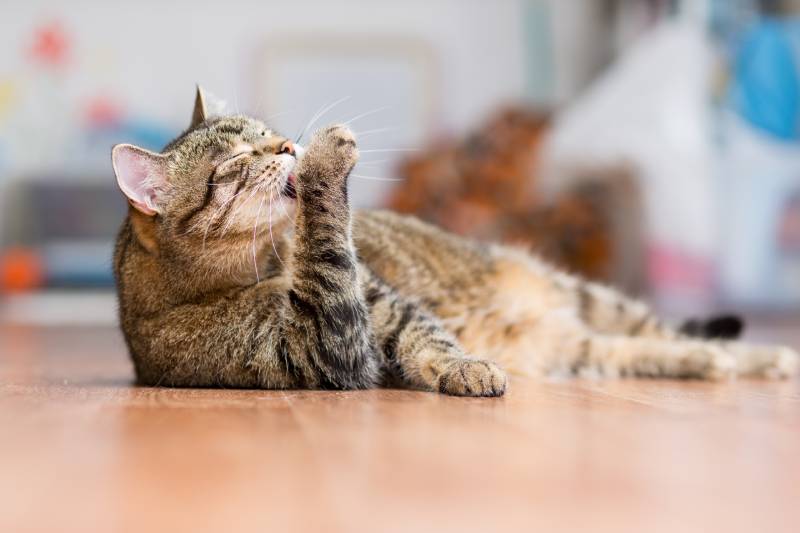
Most cat owners are familiar (and annoyed) by the feline tendency to scratch textured surfaces like furniture and door frames. We understand our cats have an instinct to scratch even if we don’t like where they do it! But what if your cat spends time pawing at smooth surfaces, often without using their claws? This behavior might not make sense to you, but here are five typical reasons your cat might paw at smooth surfaces.
The 5 Typical Reasons Your Cat Paws at Smooth Surfaces
1. Scent Marking
Cats rely on scent as one of their most important forms of communication. They have scent glands in several locations on their body, including their paw pads. When your cat paws at smooth surfaces, it could be because they’re scent marking.
Leaving their scent behind is a way for cats to claim “territory” as their own. For indoor cats, that could mean their bed, toys, humans, or favorite spot on the floor over the heating vent. Cats also use scent to establish dominance, so you may notice your cat pawing smooth surfaces more if there’s a new pet in the house.

2. Trying to Bury Their Food
If your cat paws the smooth floor around their food bowl, it could be trying to bury it. In the wild, cat species hide their food or leftovers to protect themselves. Smaller wild cats want to avoid drawing the attention of larger predators, so they bury their food to hide evidence of their presence.
Wild cats of all sizes may bury their leftover prey to avoid alerting future meals that there’s a predator in their midst. Domestic cats may follow these same instincts to hide their bowl of kibble, even if they live indoors with neither predators nor prey in the vicinity!
3. Play Behavior
Your cat may paw at smooth surfaces as play behavior. This is especially true if your cat paws at reflective surfaces like a mirror or window. Cats don’t always realize that the “kitty in the mirror” isn’t a new friend and may paw or swat at the surface as they try to play with their reflection. They may paw at windows for similar reasons or because they spy another animal they want to play with or hunt.

4. They’re Hunting Something on the Surface
Sometimes, cats may paw at smooth surfaces because they’re trying to catch “prey” they’ve spotted. For example, a speck of dirt on a window or a knot on a wood floor. Cats don’t see long distances as well as humans, but they have excellent close-up vision for stalking prey.
They also have strong hunting instincts, despite centuries of being domesticated animals. This combination could lead your cat to dig and paw at a smooth surface, trying to capture something they’ve spotted there.
5. Obsessive Behavior
In some cases, your cat may paw at smooth surfaces because of a behavioral issue. Cats, especially certain breeds like the Siamese, may develop obsessive and compulsive disorders, where they repeatedly perform certain behaviors for no obvious reason. Common obsessive behaviors include overgrooming and sucking on fabric.
Repeated pawing at smooth surfaces without another explanation could indicate a compulsive behavior. Many of these disorders are inherited, and some are accidentally encouraged by owner reinforcement. If your cat seems to be pawing smooth surfaces excessively and obsessively, have them seen by your veterinarian.

 How to Stop Your Cat from Pawing Smooth Surfaces
How to Stop Your Cat from Pawing Smooth Surfaces
Depending on why and how often your cat is pawing smooth surfaces, it may not be necessary to stop them. However, if the pawing is damaging your belongings or if you suspect it has a behavioral cause, you may need to intervene.
If your cat is pawing to mark their territory, check to make sure all kitties in the house have their own space and possessions, so they don’t feel the need to compete. Provide one more litter box than the number of cats at home, and make sure you spend one-on-one time with each cat daily.
Cats that paw to play should be provided with plenty of toys and scratching surfaces to redirect their behavior.
Make sure that mirrors are secure, so there’s no chance your cat can knock them over and risk injury. Play with your cat every day to help keep them entertained and minimize competition for your attention.
If your cat paws to try and bury their food, try feeding only small amounts at a time so they can finish the full meal. If multiple cats are in the house, separate them during meals so slow eaters don’t get stressed.
Finally, if your cat suffers from an anxiety or obsessive behavior problem, work with your veterinarian to manage the problem. Your vet will rule out any medical issue causing the pawing first. If a behavioral problem is confirmed, your cat may need medication or lifestyle changes to help control the issue.

In Conclusion
As we’ve learned, your cat could have several reasons for pawing at smooth surfaces. Most of the time, this behavior is normal and not a cause for concern. If you’d prefer your cat stop the pawing, it’s vital first to identify why they’re doing it before you can find a solution. Remember, punishing your cat for a behavior you don’t like, especially if it’s natural to them, is never the appropriate response.
Featured Image Credit: lshman000, Pixabay


 How to Stop Your Cat from Pawing Smooth Surfaces
How to Stop Your Cat from Pawing Smooth Surfaces



